New in Version 1.1.0.0, SalesPad Mobile supports operating without connection to a Mobile Server. This is achieved via synchronizing the user's Dynamics GP SQL database into a local SQLite database that is operated on, and resynchronized with the server at the user's leisure. The following sections will detail the offline and synchronization process.
SYNCING AND GOING OFFLINE INITIALLY
Before the user is able to go offline, it is necessary to create and populate the local SQLite database. The first time the user selects either the Sync or Go Offline options they will be presented with the following prompt.

Selecting Yes on this prompt will begin the synchronization process.
SYNCHRONIZING TO OFFLINE MODE
The synchronization process can be started by selecting the Sync Data option when in online mode, or by selecting Yes to the prompt shown the first time the user attempts to go offline.
The server will create a SQLite database version of the Dynamics GP database, and transfer it to the device in chunks. Upon completion, the amount of time the sync took will be displayed.

GOING OFFLINE
Once the user has a synced database, they can enter Offline mode at any time by selecting the Go Offline option in the slide menu. It is, however, usually a good idea to re-sync data beforehand to ensure the most up-to-date information is used.
Offline mode is by-and-large identical to online mode, with the following differences:
- No connection is required to the Mobile Server
- Data will be pulled from and stored in the local SQLite database until the Go Online option is selected.
- Sales Documents and Sales Line Items are not available for viewing in offline mode, except for those which have been entered since going offline (for data size reasons).
- The Sales Monitor module is unavailable.
- The Email Report function for Sales Documents is unavailable.
- When in offline mode, the color of the header bar across the application will change color (Silver in iOS, Green in Android) to ensure that the user knows they are in offline mode.
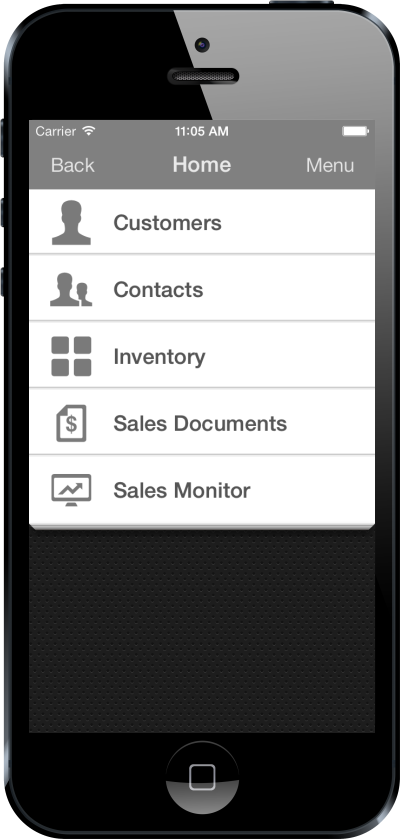
GOING ONLINE
The user can exit offline mode and re-enter a connected state at any time by selecting the Go Online option from the slide menu's Offline category. Doing so will start the resynchronization process.
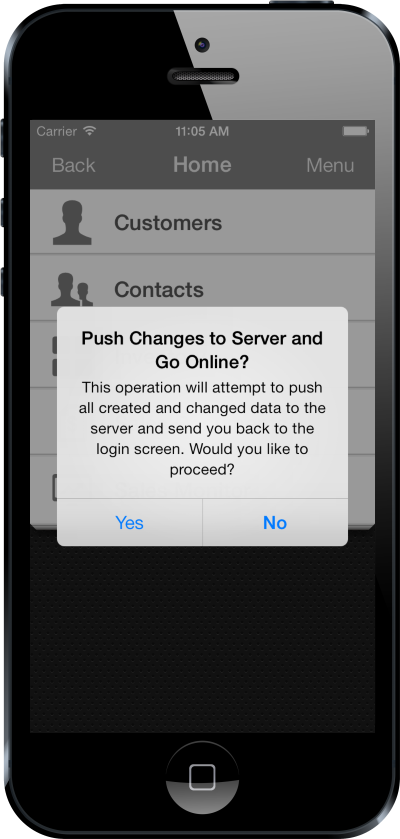
Any changes to existing Documents, Customers, and Contacts, along with any new Documents, Customers, or Contacts will be pushed to the server. If any conflicts are detected between the local data and the server's data, the Conflict Resolution process will be started, as detailed in the following section. If no conflicts are detected, the changes are pushed to the server and the following prompt is shown.
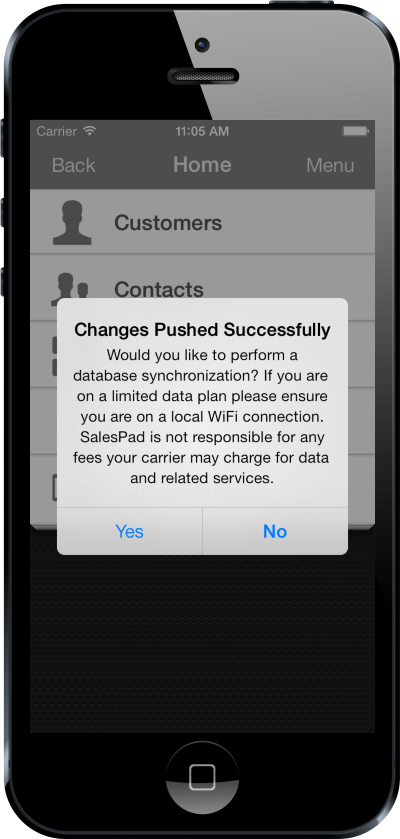
Selecting Yes to this prompt will perform the synchronization process again, and pull the current version of the Server's database. Doing so is recommended, as it will ensure the user has current data the next time they go offline, but is not required.
CONFLICT RESOLUTION
If the server detects any conflicts between the local database and its own when synchronizing to online mode, the user will be presented with the following prompt.

Selecting Delete Local Changes will delete any local Documents, Customers, and Contacts which conflict with the server. This process is irreversible.
Selecting Resolve will present the user with a list of the conflicts, and instructions for how to resolve the problems.
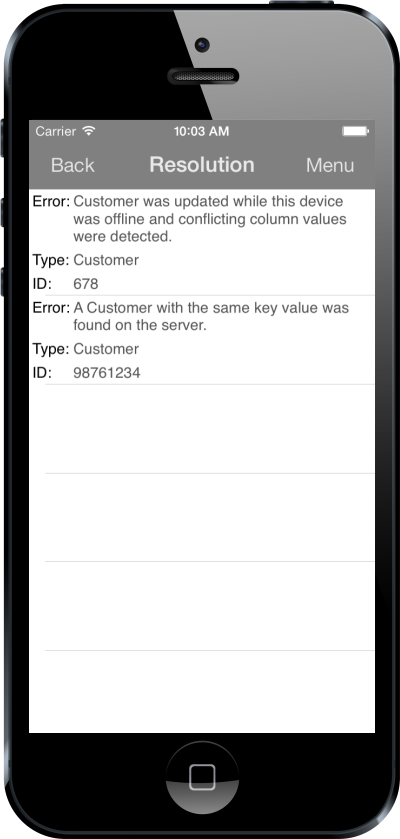
In the above example, there are two different types of conflicts, a Column Difference Conflict and a Key Column Conflict. Both will be detailed in the following sections.
Selecting Undo Local Changes will prompt the user if they would like to undo all of their local, unsaved changes.
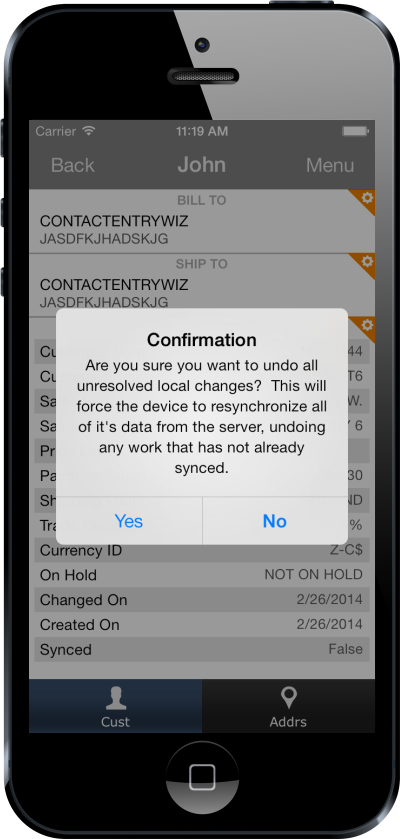
Once all conflicts have been investigated, the Resolution Complete prompt will be shown.
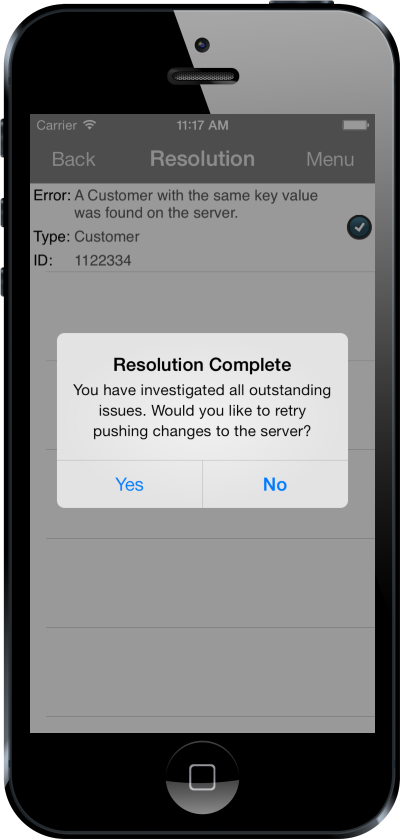
Selecting Yes to this prompt will re-attempt the sync. If any of the attempted resolutions were unsuccessful, the user will be prompted with another resolution list with the updated conflicts, and the process will be repeated.
COLUMN DIFFERENCE CONFLICTS
A column difference conflict occurs when a Customer, Contact, or Document has been edited on both the server and the device since the last time the device synchronized its data. Selecting a column difference conflict in the resolution list will open a list of the conflicting columns.
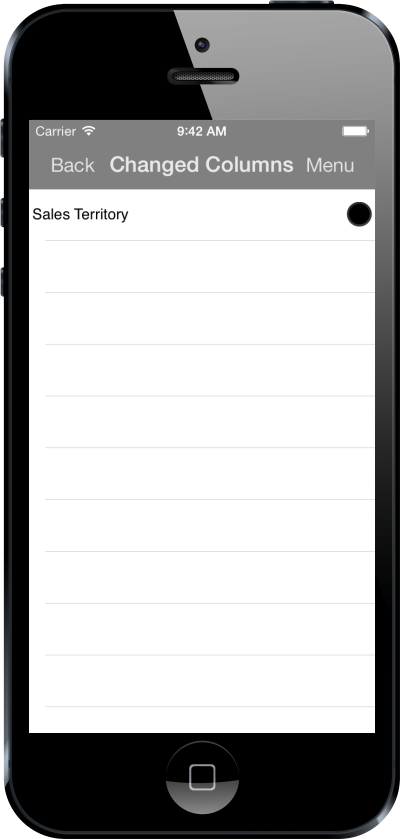
In this example, the Sales Territory column of the customer is in conflict. Selecting the Sales Territory row will display the conflicting values.
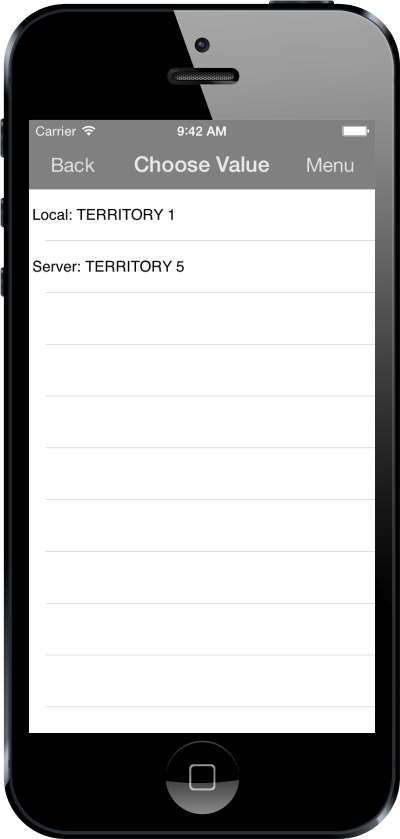
The above list shows that the local user has selected the value Territory 1 and a user on the desktop has selected the value Territory 5. The user can select which value to save at this point.
Once all columns have been resolved, the user will be prompted to return to the resolution list.
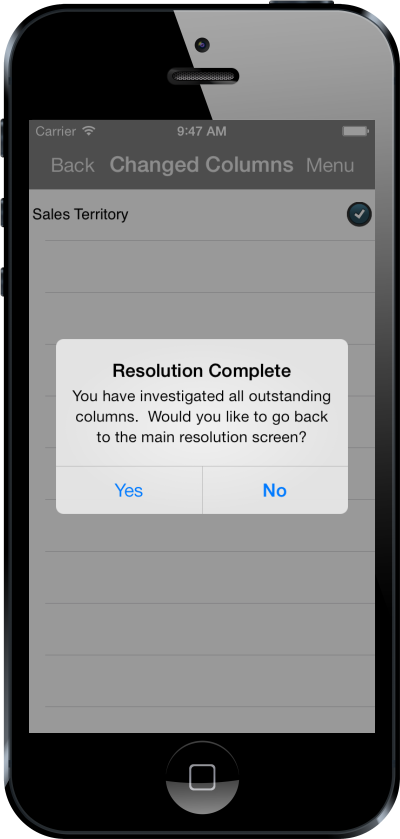
KEY COLUMN CONFLICT
A Key Column Conflict occurs when an object created locally has the same key value (Customer: Customer Number, Contact: Address Code, Sales Document: Sales Document Number) as an object entered in the desktop client since the device has last synchronized its data. Selecting a Key Column Conflict from the Resolution List will display the following screen:
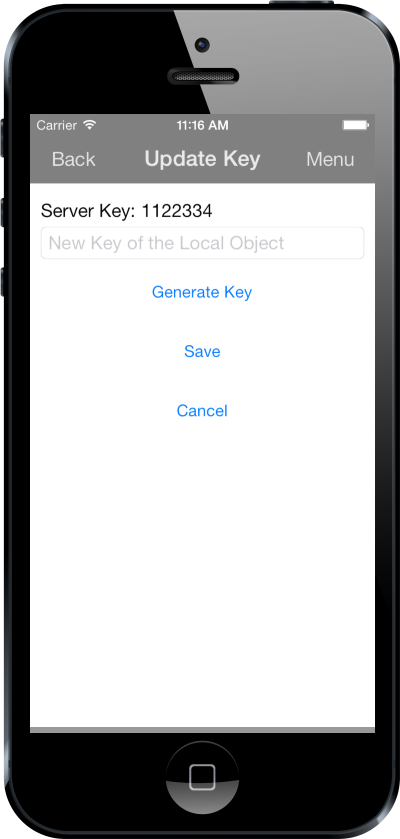
The first value shown is the key value in question, in this case, 1122334. In the text box directly below, the user can enter a new key. Tapping Save now will change the key value of the local object, allowing the two to exist without conflict. For Customers, there is an additional option, Generate, which will generate a new Customer Num automatically.
SalesPad Support
Comments